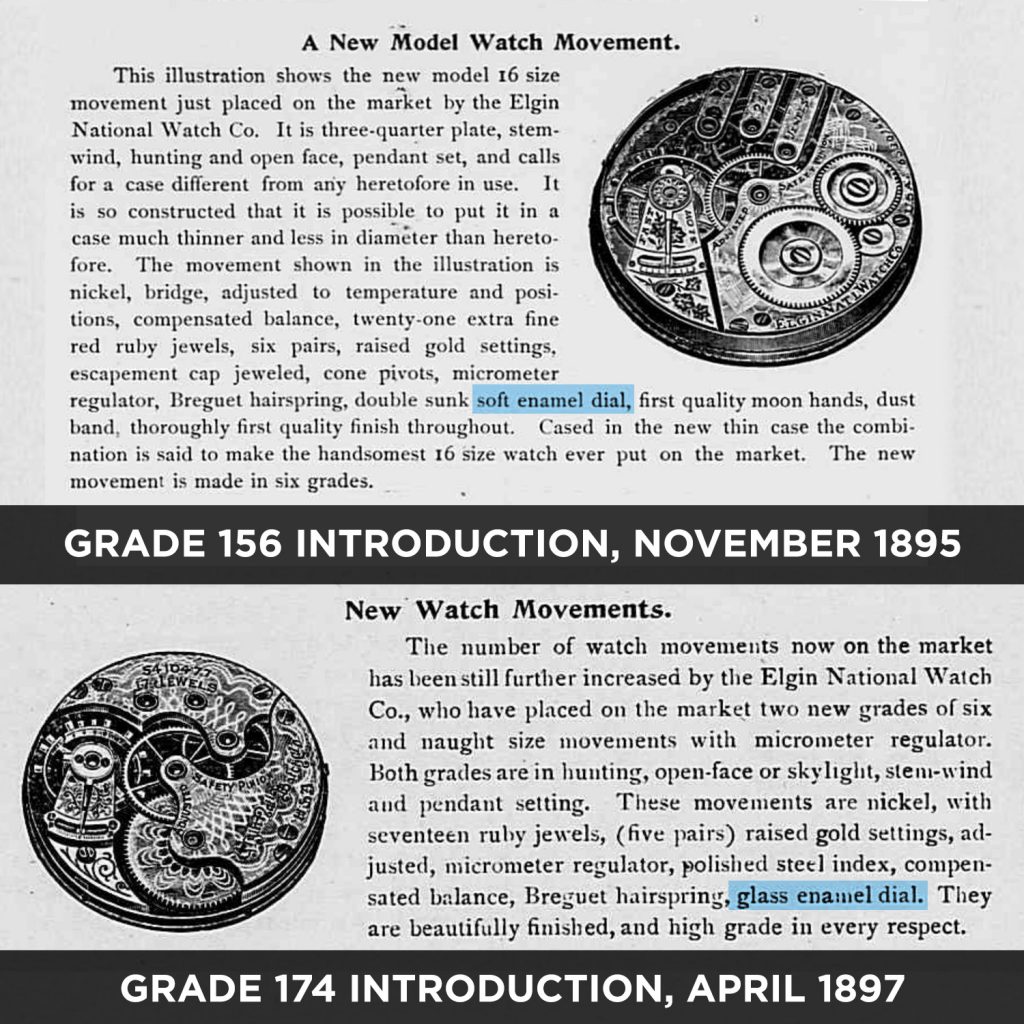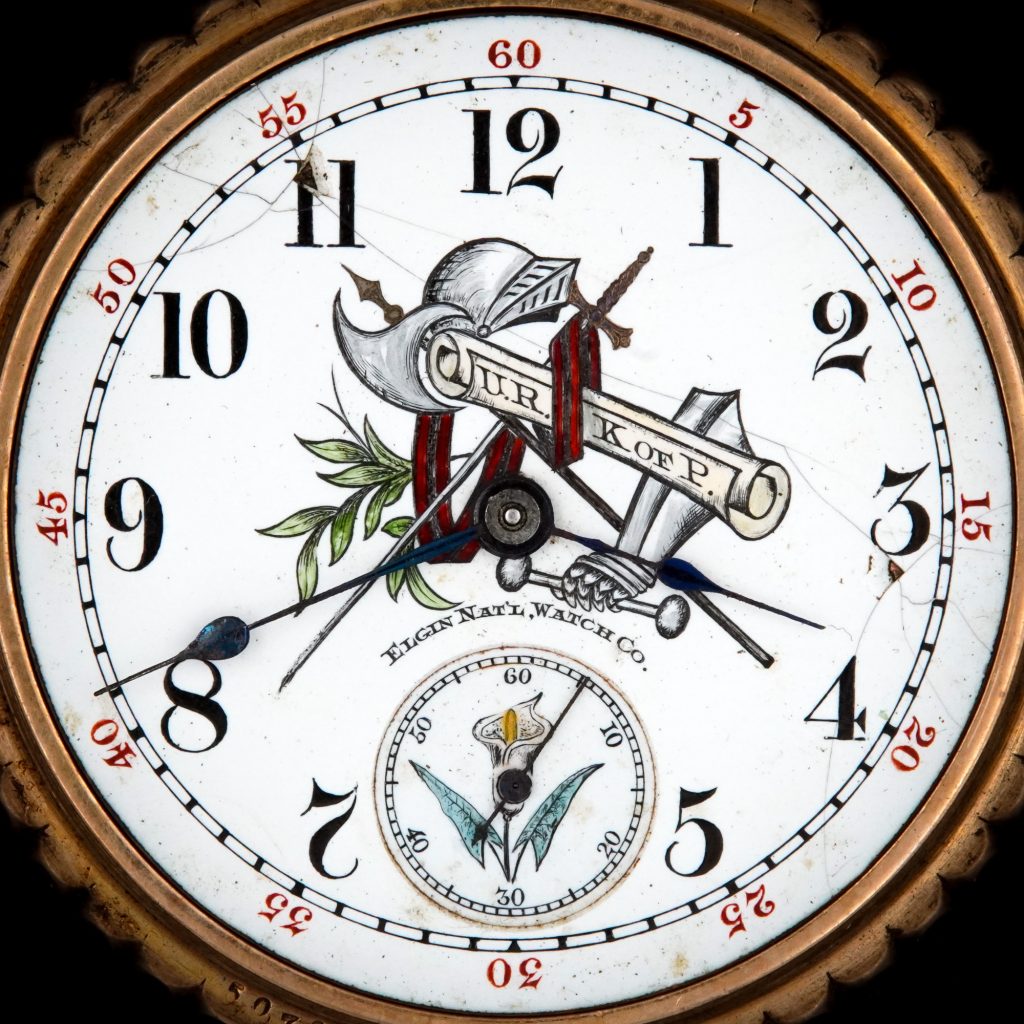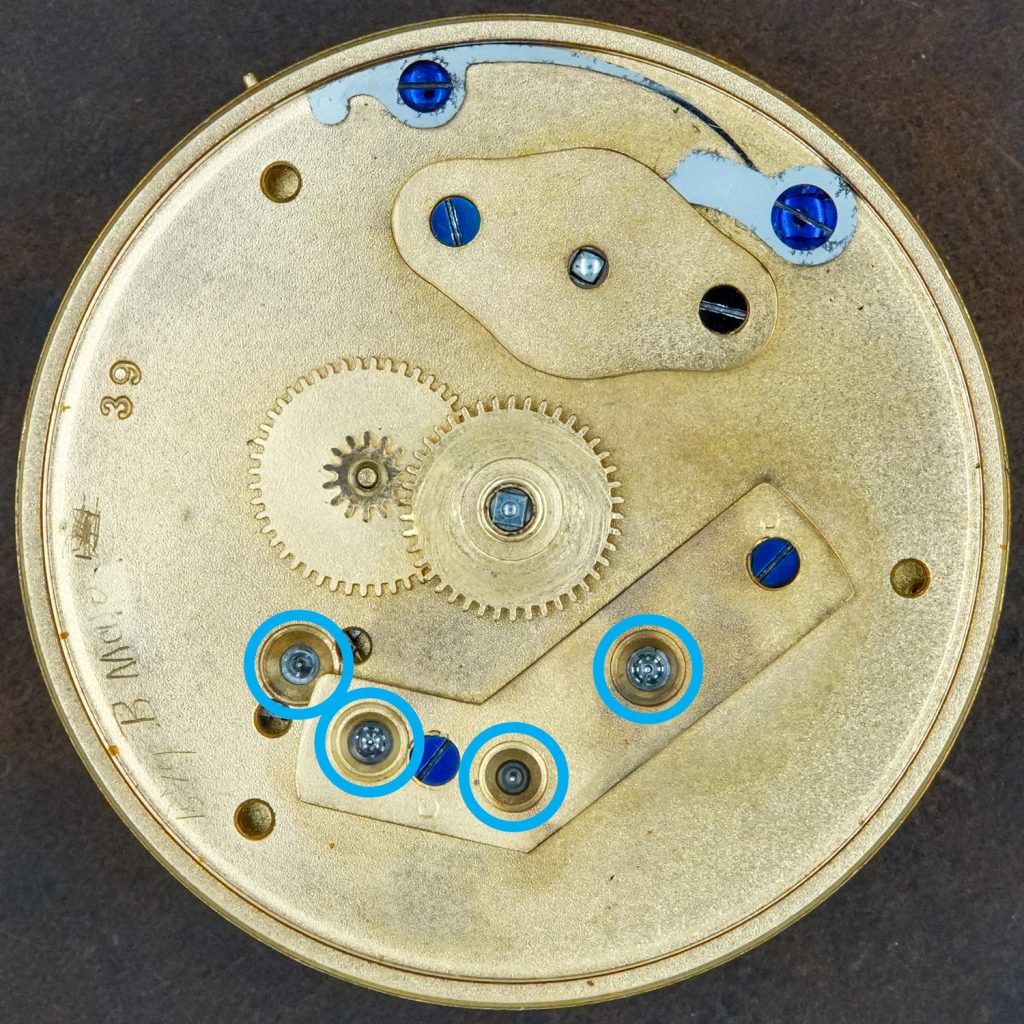Venetian Hard Enamel vs. English Soft Enamel Dials: Part 6 – Distinguishing Soft Enamel and Glass Enamel Dials
During the early introduction of soft enamel dials to the broader watch market in the 1870s and 1880s, the term “soft enamel” was used to describe them, logically contrasting the “hard enamel” term used to describe standard dials.
As the demand for the new dials increased, the term “glass enamel” was adopted by most factories, a more accurate name to describe the glossy surface that characterized the dials. However, this term was not adopted by the Elgin National Watch Company until much later.
In 1895, Elgin began to introduce new models of movements in every popular size, many of which were issued with a soft enamel dial as the standard option.
As late as January 1897, advertisements were published offering the new movements with soft enamel dials. This use of an outdated term may have been confusing to customers already familiar with the “glass enamel” dials offered by other watch companies. Additionally, the Elgin factory had previously used the term “glass enamel” in their 1889 catalog of society and sporting dials, resulting in further inconsistency.
This was resolved in April 1897, when Elgin introduced the 6-Size Grade 176 and the 0-Size Grade 174 using the modified terminology “glass enamel.” By the time the 1904 Elgin Material Catalog was published, all dials were distinguished only by two terms: Hard Enamel and Glass Enamel.





I have an open face 3/4 plate movement with a two-tone finish, 7 jewels, and about 15s in size
the name on the face is PAULA.
I open the watch to find no serial no. or manufacturer
inside the case are a standing LOIN and 0,900 makings with a case no. of 90320, no other marking
can you help
it appears to be in working order, just need cleaning
thank you
Without a manufacturer marking, it would be difficult to determine the origin. Likely Swiss.